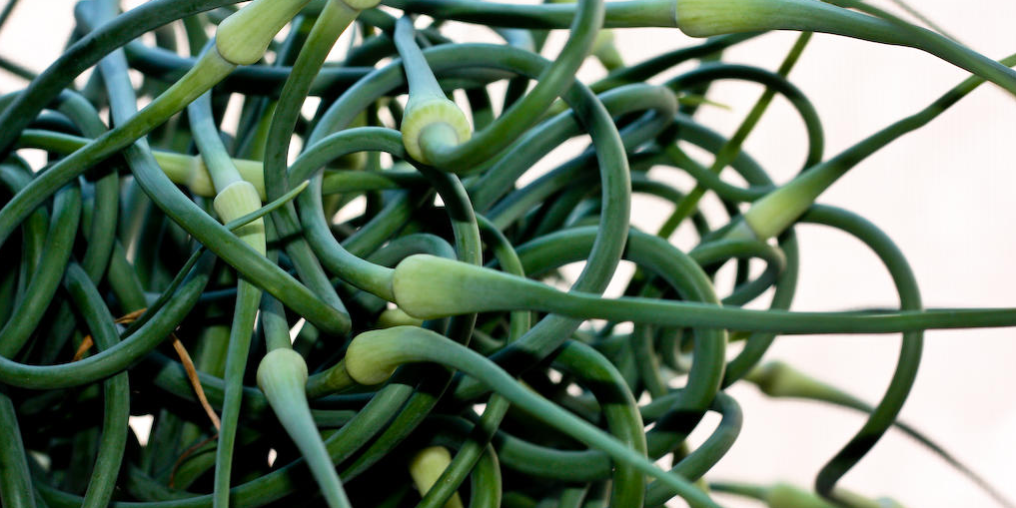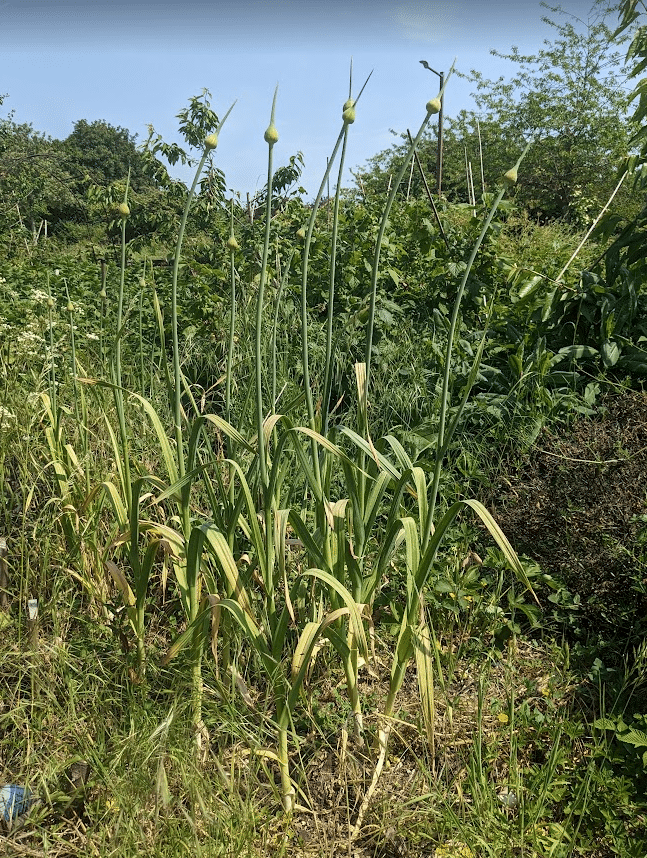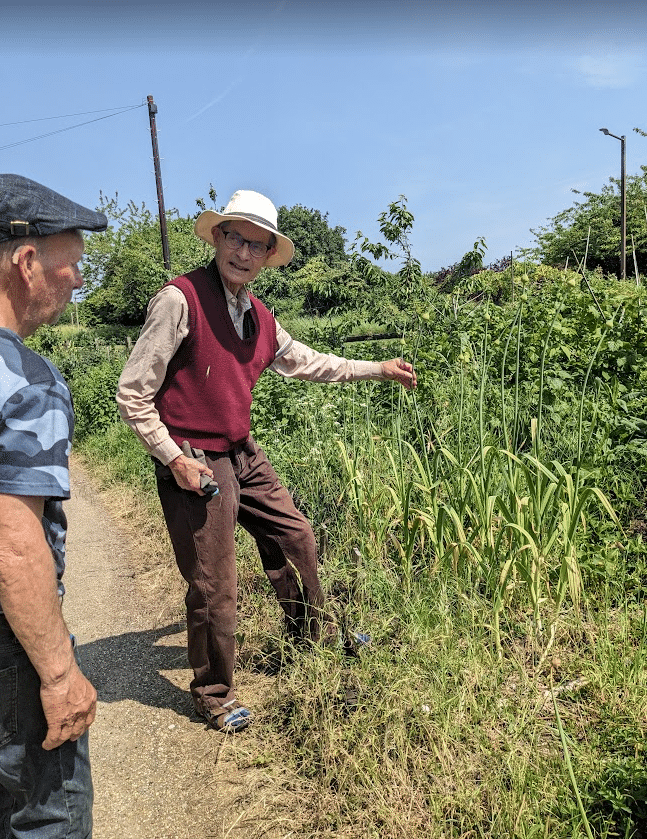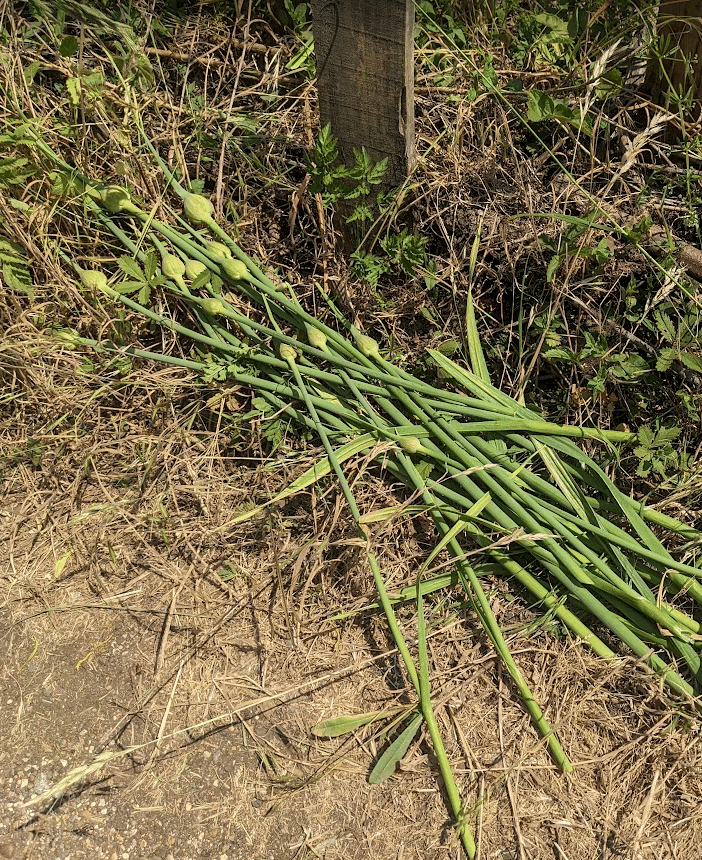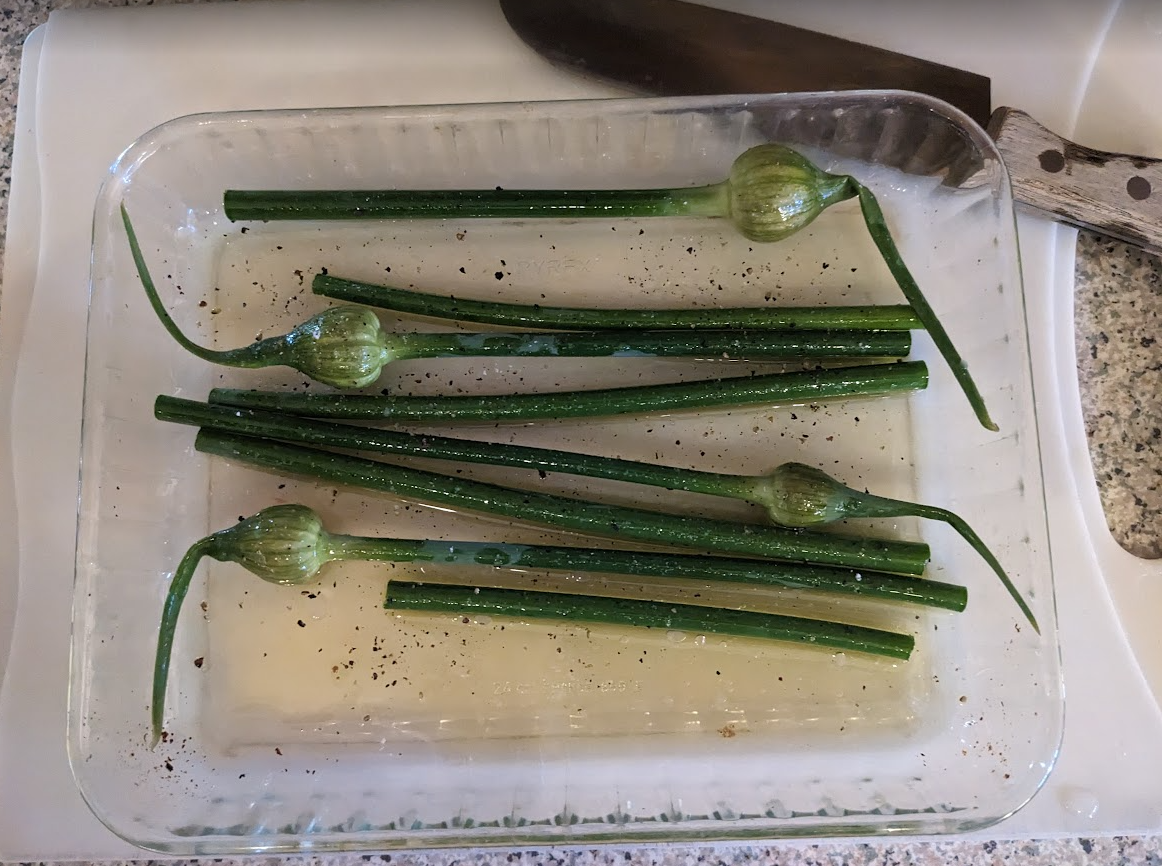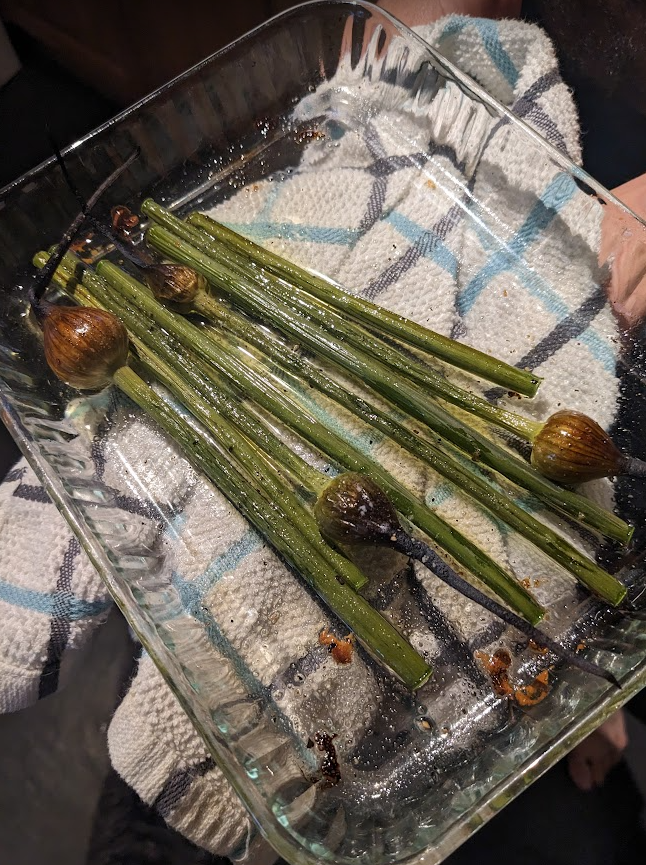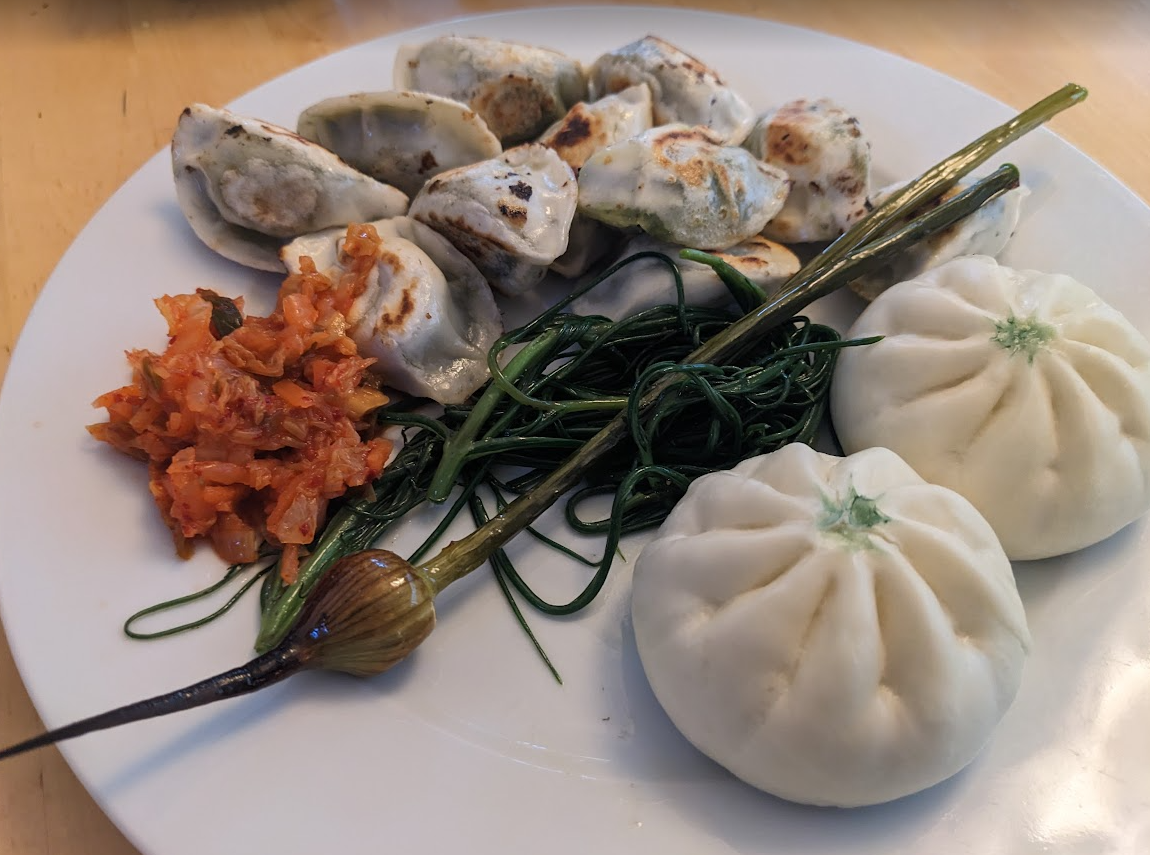Last year we planted some Elephant Garlic, and this summer you can see how much they’ve shot up!
What are scapes?
Basically, those little green onion domes perched on the top of the skinny stalks are called scapes, and amazingly, are considered quite a foodie delicacy.
If you’ve ever planted garlic, leeks, or onions, or seen them growing somewhere in the spring, there’s a good chance you’ve seen scapes.
The scape is actually the flower stalk, and if left on the plant, will open up into a pretty flower. The problem is that by leaving it, the plant’s growing energy goes into the flower and not the bulb, when it’s the bulb you want to grow bigger to eventually eat.
So the idea is to harvest the scapes before they blossom so that the plant can focus it’s energy on it’s bulb again.
Harvesting scapes
As can be seen in the second picture, Michael is showing us where to cut off the scape from the main garlic shoot.
You just need to look for the spear or shoot with a small bulb coming out of the centre of the plant then use sharp garden shears to cut the shoot off near the top set of leaves.
A tasty veg
Scapes taste of two things:
1.) a very mild version of the the plant they come from. So in our case, really mild garlic.
2.) a fresh, yet less crunchy, asparagus.
So, they can be chopped into small pieces as a great substitute for finely chopped onion. But because they can be a little tough, if you’re using them in something like a quiche, it’s worth giving them a quick sauté first.
You can also chop scapes into larger pieces, about an inch, to use in stir fries, curries, pasta, and casseroles.
Or try cooking and puréeing them into a scape pesto.
And if you’d like to really feature the scapes like I do, try coating them in a little oil and roasting or grilling until tender – as shown in the pictures of my dinner after this particular visit to our forest garden when they were super fresh and delicious!


